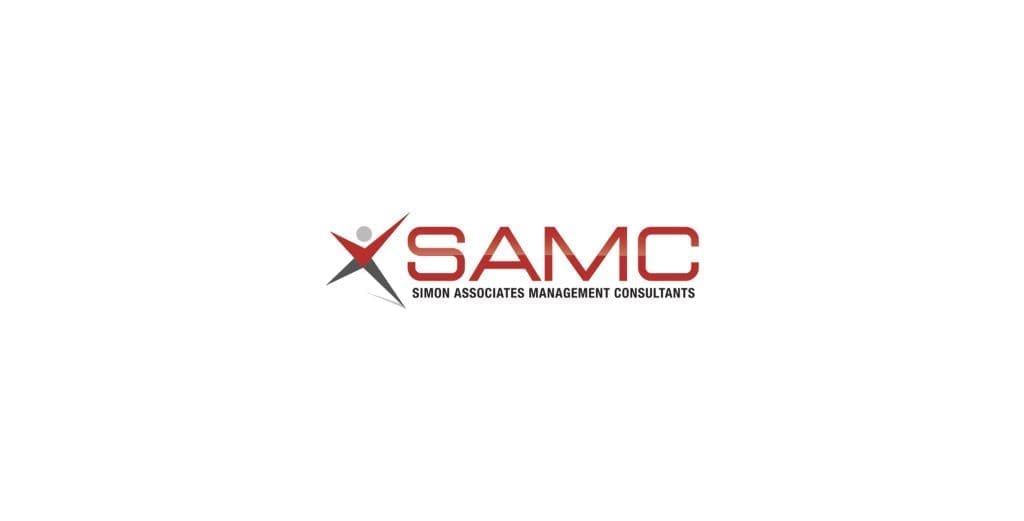 The much-talked-about book, Blue Ocean Strategy®, shows companies how to expand by creating new market spaces or industries that have little or no competition. Authors W. Chan Kim and Renée Mauborgne describe the space where most companies compete as the “red ocean”—a space bloodied by fierce competition.
The much-talked-about book, Blue Ocean Strategy®, shows companies how to expand by creating new market spaces or industries that have little or no competition. Authors W. Chan Kim and Renée Mauborgne describe the space where most companies compete as the “red ocean”—a space bloodied by fierce competition.
At Simon Associates Management Consultants (SAMC), we have been working with clients for many years on how to “see, feel and think in new ways.” Often it has helped them to find a Blue Ocean. But what is a Blue Ocean Strategy and why should you want to find one?
If you stop thinking about how to compete with others for the same customer in the same way, you could find that there were prospective customers with unmet needs that are waiting for you to help solve their problems in innovative ways.
Don’t say “No” yet. Read a little further.
Take a read further and see if you can begin to search for a Blue Ocean Strategy® that is ripe for the picking, if you can “see, feel and think” in innovative ways about what could be not what is already.
If you find yourself stalled with limited growth or if you see yourself in a mature or shrinking market, you may have few choices but to rethink your business strategy. Yet, we even find working with clients that are growing again that sustaining that growth is never certain and can always benefit by challenging basic assumptions and assumed trajectories.
What is a Blue Ocean Strategy, You Ask?
First, in a Blue Ocean Strategy you essentially make the competition irrelevant by breaking out of the red ocean and creating new demand in uncontested market space. Successfully implemented, a blue ocean strategy provides strong barriers of imitation, giving a substantial lead over those who follow—future competition.
Simply stated, you begin to “see, feel and think” about customer and non-user needs in very different ways. Think about who could use you who hasn’t thought of you as a solution? To compare a Red Ocean and a Blue Ocean, we set forth the following chart:
Some successful Blue Ocean companies include Shimano and what they created with their Coasting Bikes, American Girl Dolls, Southwest Airlines, Callaway Golf, NetJets, Andre Rieu, Yellow Tail and Cirque de Soleil.
- Shimano found itself with declining bicycle sales. By simplifying the bicycle they opened up a new market of those who could ride but were intimidated by the serious bicycle riders in their professional attire and serious bike clubs.
- Callaway’s strategy was to target non-golfers and bad golfers, intimidated by the sport, and give them a club head so huge they couldn’t miss the ball, thus winning over duffers in the process.
- NetJets combined the convenience of the corporate jet with the lower cost of commercial travel and offered the best of both with fractional “timeshare” jet ownership.
- American Girl went after the girls not the dolls and created an environment in which they could experience their dolls, along with their moms and grandmoms.
- Andre Rieu redefined classical music and earned over $90 million dollars in 2011 playing in completely different venues to a completely different audience.
- And of course Cirque de Soleil redefined the circus by eliminating the animals, the travel, and the three rings, thereby appealing to an upscale audience looking for a different type of entertainment. (A shame they are challenged today by the economy.)
Guiding principles
W. Chan Kim and Renèe Mauborgne offer four guiding principles for those seeking to enter the Blue Ocean:
1. Forget the Competition. Break from the competition and reconstruct market boundaries. For example, Novo Nordisk looked past the red ocean of doctors as the market for insulin to the blue ocean of diabetics and became a diabetic’s care company rather than just a producer of insulin.
2. Strategy is about the “Big Picture” not the numbers. Focus on the big picture, not the numbers. When the right strategy is implemented successfully, the numbers will follow. The right strategic planning process is critical to developing a good strategy. Unfortunately, old habits die hard, and planning processes often become mired in the numbers.
3. Create Demand rather than fulfill it. Reach beyond existing demand. Traditional strategic planning processes encourage focus on current markets and defining niches, thus continuing a red ocean existence.
4. Get the right strategic sequence. The right strategic sequence of buyer utility, price, cost, and adoptions will ensure commercial viability. Business models generally start with the cost and build the price based on how much profit a firm wants to make. Blue Ocean suggests starting by defining the utility to the customer and then designing a model so that the cost allows the profit desired. Because most companies focus on selling their products with the highest profit margins, many never get around to the subject of customer value. And don’t think of value from your perspective. Go spend time with the customer and non-user to see what they really need. Hard to just imagine it.
Some Big Questions
- Eliminate that which you are offering that is no longer relevant or of limited value. What in your offering doesn’t add value?
- Reduce other aspects that have minimum value. What factors should be reduced below the industry standard to avoid over delivering?
- Raise elements to reduce complexity and address needs straight away. What factors should be raised above the industry standard so that customers won’t have to make compromises?
- Create new solutions, even if it is in the repackaging of old options. What factors should be created that are new to the industry?
Case study—Yellow Tail wine
Let’s look at Casella Wines makers of Yellow Tail. Casella identified the competitive factors of wine as price, wine terminology, above-the-line marketing, vineyard prestige and legacy, wine complexity, age and range. After researching the potential blue ocean markets, here are the strategic actions they took.
Eliminate those factors that don’t add value to the new market.
Casella wines targeted drinkers of non-wine alcoholic beverages and drinkers of non-alcoholic beverages as two potential customer groups. They discovered that these two groups found wines intimidating and they didn’t care about traditional aspects of wine such as complexity and aging. Casella eliminated complexity, aging and other competitive factors traditional to wines.
Reduce those factors that are over delivered.
Casella’s research revealed that vineyard prestige and legacy, wine range and wine age were not too important to their target customers (non-wine drinkers). Casella reduced their investment in those competitive factors.
Raise factors above lowest-bar industry standards.
Casella reduced the price of Yellow Tail so that it was below that of the premium wines, but raised is so that it was above the budget wines.
Create factors the industry hasn’t seen before.
Casella created “easy wine drinking” by making the Yellow Tail wine taste good to non-wine drinkers; they made it easy to select wines by reducing their offering to only two wines, one red and one white wine. They created “fun” and “adventure.” This last factor is created mostly for the sellers of wine. They visited retail stores, gave the sales people special promotional clothing, created large brightly colored displays in stores and thoroughly trained wine sellers. The fact that they were also attracting nonusers to those wine stores didn’t hurt either. Together with their slightly higher price point, Yellow Tail made it fun for salespeople to sell the products and Yellow Tail flew off the shelves.
Characteristics of Blue Ocean strategy
How will I know if I am on course? This is really about three simple questions:
1. Does your strategy focus on a problem in a new way?
2. Is it differentiating from other solutions and diverge from other players?
3. And does it have a compelling tag line that can capture the essence of the strategy in a simple elevator speech. Not complex but simple.
Southwest Airlines used the Blue Ocean Strategy successfully when it chose to look at automobile transportation, not other airlines, as their competitive market. By focusing on friendly service and frequent point-to-point departures, Southwest offered prices that competed with the cost of driving. The airline set itself apart by eliminating and reducing excess and by raising value. These changes differentiated their profile from the average airline. Their tag line: “The speed of a plane at the price of a car—whenever you need it,” was highly compelling and sales took off.
Executing the strategy
- Is it time to execute a Blue Ocean Strategy? Your employees are going to watch you and wait to see if you can make it work. Most employees come to work to make a living not create a new market. So, try to:
- Get employees out of their comfort zone to wake up to the need for change. Employees are often blind to seeing that a radical change is necessary.
- Overcome the challenge to resources. Eliminate what is no longer necessary. The problem of limited resources. Many organizations wrongly assume that a new strategy requires greater resources.
- Speed works. Change comes from a crisis and you want to avoid one. So motivate employees to act quickly and decisively to push the new strategy forward. Key players must be motivated to move out of the status quo. And they must be enabled with good behavior modification tools.
- Tackle the naysayers right away. Don’t let office politics keep you in a red ocean.
Before you can execute a new strategic plan, you must align the minds and hearts of all the employees with the new strategy.
Only then will they willingly go beyond compulsory execution to enthusiastic cooperation. Successful execution requires that employees have input in the strategy process from the beginning. Here are three ways to get that input:
1. Include employees in the process. Seek their input prior to major decisions.
2. Keep employees fully informed of the process and its implications.
3. Communicate to employees about what is expected of them and how they will be evaluated.
When management engages employees in key aspects of strategic decision making, explains the strategic choices, and effectively communicates the new rules of the game—then employees will judge the process as fair and buy into it.
Once you begin to “see, feel and think” in new ways it is difficult to go back to the old strategic process.
Clients find themselves using the tools all the time and thinking in new ways about unsolved problems. They go exploring often to listen to nonusers and find new markets awaiting them. Some illustrative client stories:
- Elkay’s Hydration Stations are revolutionizing the water fountain not to make it easier to get water but to eliminate plastic water bottles in places that care about sustainability and “killing the bottle.”
- TelerX reinvented its customer care business to expand into online solutions.
- EAC/Integrated Power Solutions reinvented itself after it went visually exploring only to find that its own customers need “lighter, longer, power solutions” not just batteries.
If your company’s growth is stalled or if you are afraid it might be, try to think like a Blue Ocean Strategist and begin to “see, feel and then think” in new ways. There might be a real big ocean just waiting for you.




